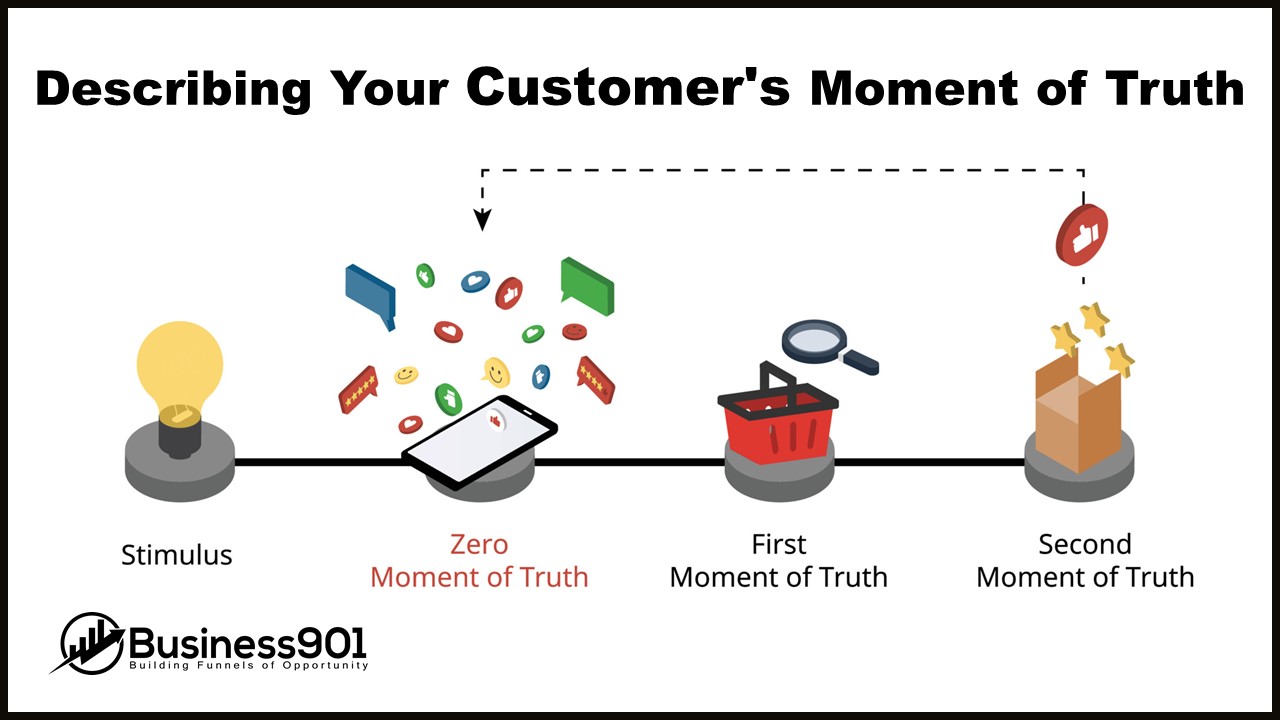In business, it is essential to understand your customers’ needs to foster meaningful relationships and create a successful customer experience. One of the key elements of this understanding is awareness of the customer’s “moment of truth” – the point when the customer is most likely to make a purchase or decision about your product or service—knowing how to accurately describe this moment of truth and understand how it impacts customer behavior, and decision-making is crucial in creating a positive customer experience.
- Understand the customer’s overall journey and objectives: Understanding the customer’s overall journey and objectives is the first step in describing their moment of truth. By analyzing their journey and objectives, you can gain valuable insight into what matters most to them and what drives them to take action. You can then use this information to create a tailored experience that meets their needs. Additionally, understanding the customer’s journey and objectives will help you identify any potential roadblocks they may face. You can design solutions that address these issues and ensure a smooth customer experience.
- Identify the customer’s most important interaction points: Identifying the customer’s most important interaction points is essential for creating a successful customer experience. It’s helpful to consider the various touchpoints that customers come into contact with during their purchasing journey. This includes the website, the mobile app, customer service, the physical store, the product itself, etc. These touchpoints are important for creating a smooth and memorable customer experience. It’s essential to identify which touchpoints are the most important for customers and what kind of interactions they expect from each one. This will help you create a successful customer experience that meets or exceeds their expectations.
- Determine when the customer is most vulnerable: When trying to understand your customer’s moment of truth, it is important to determine when they are most likely to be vulnerable and open to making a purchase. This is when customers are in the decision-making process, deciding which product or service to purchase. This can happen when customers are researching your products, comparing them to their competitors, or even when they are making their purchases. Understanding when customers are most vulnerable can help you create targeted messaging to ensure they make the right decision and purchase from you.
- Assess the customer’s emotional state at each interaction point: Understanding your customer’s emotional state at each interaction point is essential to providing meaningful and memorable customer service. It enables you to understand customers’ needs, expectations, and preferences to provide them with the best possible experience. A customer’s emotion can be assessed through behavior and verbal cues (e.g., tone of voice, body language, facial expressions). It is also important to remember that customer emotions can vary from person to person and change throughout a customer journey. Therefore, assessing the customer’s emotions at each point of contact is important to ensure the customer is provided with the best possible service.
- Offer personalized solutions to ensure the customer’s desired outcome: Your customer’s moment of truth is when they need a personalized solution to ensure their desired outcome. It’s important to remember that no two customers are the same, so having a personalized approach to all customer interactions is key. Offer tailored solutions, customized products, and services that align with the customer’s needs, wants, and goals. Ensure attentive listening to customer feedback and concerns to build a better customer experience. Approach every customer interaction positively, and show empathy and understanding for the customer’s situation. Doing so will help build trust and loyalty and drive better customer outcomes.
In conclusion, understanding your customer’s moment of truth can help you identify key areas to focus on to ensure customer success. Identifying the moment of truth can also be a great way to benchmark your performance and measure customer satisfaction. Understanding your customer’s moment of truth can create experiences that drive loyalty and retention, leading to greater customer satisfaction and success.

